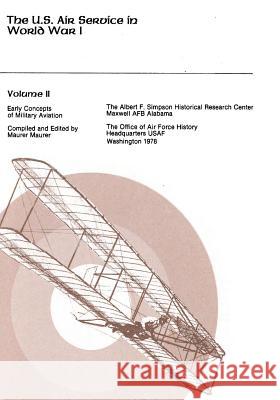Early Concepts of Military Aviation » książka
Early Concepts of Military Aviation
ISBN-13: 9781507707364 / Angielski / Miękka / 2015 / 480 str.
There has been a tendency to belittle the work of the U.S. Air Service in World War I while singing the praises of heroes like Rickenbacker and Luke. Compared with the bombing of the U.S. Eighth Air Force in World War II or the B-52's in Southeast Asia, the 138 tons of bombs dropped by the U.S. Air Service in France in 1918 may seem almost too insignificant to mention. Any such comparison, however, should not lead to a conclusion that World War I was of little importance in the overall history of the U.S. Air Force. The U.S. Air Service should be viewed in relationship to its own age. World War I was fought when aviation was still young. The first ace of the U.S. Air Service won his victories in a French plane that had a top speed of about 125 miles per hour and a tendency to shed the fabric of its upper wing in a dive. The American-produced DH-4, used by the 1st Day Bombardment Group, usually carried about 220 pounds of bombs for a mission, which meant a lot of sorties to deliver 138 tons of bombs. Aviation technology was not always equal to the tasks to be performed. A major goal of the U.S. Air Service, one not attained during the war, was the development of a bomber force capable of hitting strategic objectives in Germany. Targeting for the strategic campaign involved the identification of "a few indispensible targets without which Germany cannot carry on the war"-an idea that would be used years later against Hitler and the Third Reich. Interdiction, close air support, and some other types of missions carried out by the US. Amy Air Forces in World War II, and by the U.S. Air Force at later times, had already been tried by the U.S. Air Service. Some documents illustrating various concepts and ideas for the employment of the U.S. Air Service in World War I have been selected for publication in this volume, one of a series being published by the Office of Air Force History.
Zawartość książki może nie spełniać oczekiwań – reklamacje nie obejmują treści, która mogła nie być redakcyjnie ani merytorycznie opracowana.











